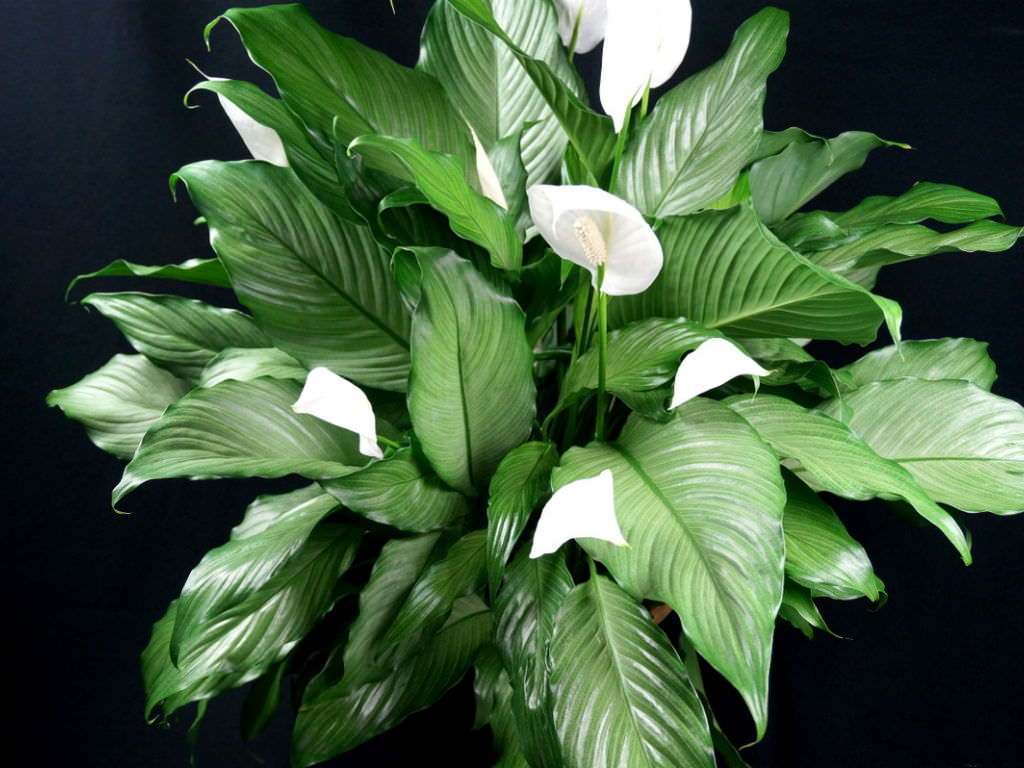
Source worldoffloweringplants.com
Welcome to our comprehensive guide on caring for peace lilies, also known as Spathiphyllum. These beautiful houseplants not only bring elegance and beauty to any indoor space, but they are also known for their air purifying qualities. In this article, we will explore the best practices for peace lily care, ensuring that your plant thrives and stays vibrant for years to come.
Before we dive into the specifics, it’s important to understand the natural habitat of the peace lily. Native to tropical regions, peace lilies prefer warm, humid environments. With this in mind, let’s delve into the key aspects of peace lily care and maintenance.
Choosing the Right Location
Creating the optimal environment for your peace lily is crucial for its growth and overall health. When it comes to choosing the right location, keep in mind the following:
- Indirect sunlight: While peace lilies can tolerate low light conditions, they thrive best in bright, indirect light. Avoid placing them in direct sunlight, as it can scorch their leaves.
- Avoid drafts: Peace lilies prefer a stable temperature environment, so keep them away from doors, windows, and air vents that may expose them to drafts.
- Humidity levels: As tropical plants, peace lilies appreciate higher humidity levels. Consider placing the plant near a humidifier or misting its leaves regularly to create a humid microclimate.
Watering and Moisture
Proper watering is essential for the well-being of peace lilies. To ensure you’re providing them with the right amount of moisture, follow these guidelines:
- Consistent moisture: Peace lilies prefer slightly moist soil at all times. Avoid allowing the soil to dry out completely or become waterlogged.
- Watering frequency: Water your peace lily when the top inch of soil feels dry to the touch. Remember to water thoroughly, allowing excess water to drain out of the pot.
- Quality of water: Peace lilies are sensitive to chemicals found in tap water, such as chlorine or fluoride. If possible, use filtered or distilled water for watering.
Fertilizing Routine
Feeding your peace lily with the right nutrients helps promote healthy growth and vibrant foliage. Follow these guidelines for an effective fertilizing routine:
- Timing: Fertilize your peace lily every two to three months during the growing season, which typically extends from spring to summer.
- Use a balanced fertilizer: Choose a water-soluble, balanced houseplant fertilizer with a ratio like 10-10-10 or 20-20-20.
- Dilution: Follow the instructions on the fertilizer package to ensure the correct dilution ratio. Over-fertilizing can lead to salt build-up in the soil.
Potting and Repotting
The right container and proper repotting techniques contribute to the overall health and growth of your peace lily. Consider the following factors regarding potting and repotting:
- Pot size: Choose a pot that allows for a couple of inches of space between the roots and the container’s edges. Peace lilies prefer slightly snug conditions.
- Drainage: Ensure the pot has drainage holes to prevent waterlogged soil, as excessive moisture can lead to root rot.
- Repotting frequency: Repot your peace lily every two to three years or when its roots become overcrowded. Spring is the ideal time to repot.
Table Breakdown of Peace Lily Care
| Aspect | Details |
|---|---|
| Light | Indirect sunlight, avoid direct sunlight |
| Temperature | Avoid drafts, stable temperature environment |
| Humidity | Higher humidity levels, misting or humidifier |
| Watering | Consistent moisture, water when top inch of soil is dry |
| Water quality | Avoid tap water chemicals, use filtered or distilled water |
| Fertilizing | Every 2-3 months during growing season, balanced water-soluble fertilizer |
| Potting | Choose a slightly snug pot with drainage holes |
| Repotting | Every 2-3 years or when roots are overcrowded, repot in spring |
FAQs about Peace Lily Spathiphyllum Care
1. Can peace lilies tolerate low light conditions?
Yes, peace lilies can tolerate low light conditions, but they thrive best in bright, indirect light.
2. How often should I water my peace lily?
Water your peace lily when the top inch of soil feels dry to the touch. Avoid overwatering or letting the soil dry out completely.
3. What type of fertilizer should I use for my peace lily?
Choose a balanced, water-soluble houseplant fertilizer with a ratio like 10-10-10 or 20-20-20. Feed your peace lily every two to three months during the growing season.
4. Do peace lilies require high humidity?
Peace lilies appreciate higher humidity levels, but they can tolerate average household humidity. Misting the leaves or using a humidifier can help create a humid microclimate.
5. When should I repot my peace lily?
Repot your peace lily every two to three years or when its roots become overcrowded. Spring is the ideal time for repotting.
Conclusion
Caring for a peace lily is not only rewarding but also relatively straightforward. By providing the right amount of light, water, and nutrients along with occasional repotting, you can ensure your peace lily thrives and brings beauty to your indoor space for years to come. Remember to pay attention to its specific needs, and you’ll be rewarded with a healthy and vibrant plant that purifies the air and adds a touch of tranquility to your home.